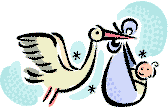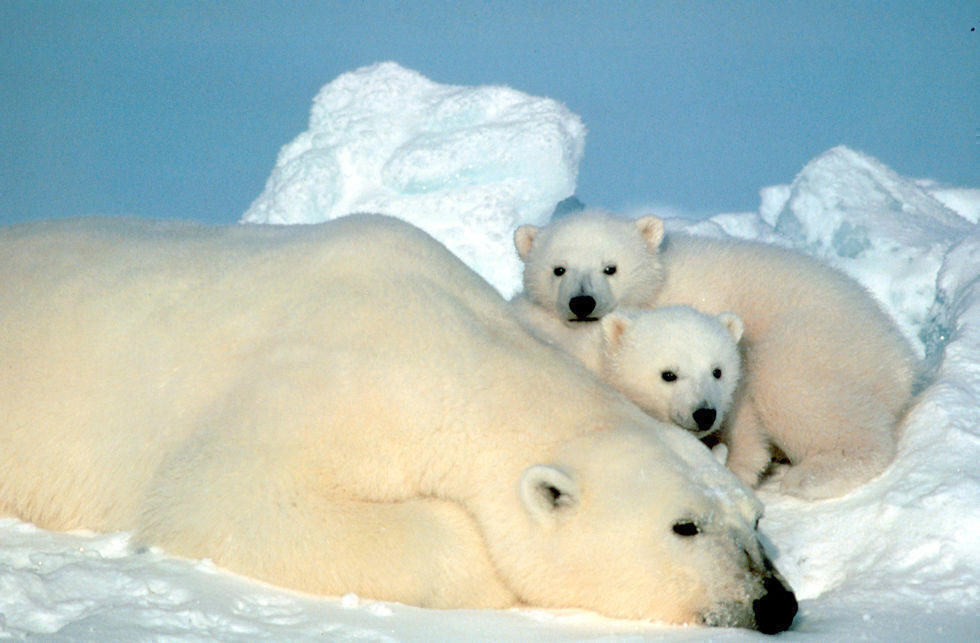|
|
|
The picture below belongs
to U.S. Fish and Wildlife Digital
Libaray Polar bears usually begin breeding at maturity or between three to five years of age. When female polar bears are in heat, they give off a scent that attracts the male polar bears. By following this scent, the male polar bears are able to find a mating partner. Some males may travel long distances to find a mate; whereas, other males mate with several females at a time and have no trouble finding a female to mate with. During the breading months, male polar bears are known to get violent with one another and occasionally even kill other cubs. Breeding usually takes place during the months of April, June or July; however, embryonic development may not occur until the following year (U.S. Fish and Wildlife Services, 1-2). Often times, this is because the mother does not have a stable enough food supply to feed both her and the developing embryo during the long winter months of pregnancy. During the duration of the gestation period, female polar bears spend most of their time on the mainland where they dig large dens to hide out in and give birth to their young. There are three large concentrated denning areas known today. These areas include: Kong Karl's Land in Svalbard Island group (Norway), Wrangell Island in Russia, and northeastern Manitoba, Canada, on the western Hudson Bay coast (Ruff and Wilson, 164). While in the den during pregnancy, there is very little food available for the mother polar bear to feed on. For this reason, the mother polar bear must consume a sufficient enough food supply to sustain herself and her developing fetus during the rather long gestation period. During the winter months of October and November, the male polar bear spends most of his time out on the packice.
Both of the pictures above
belong to
Polar Bears
International. The picture to the left shows the mother
and her cub lounging around in the snow. The developing fetus is housed inside of a placenta during pregnancy. This structure unites the fetus to the mother's womb and supplies it with nourishment and oxygen (Gotch, 460). This feature allows for greater development of the embryo and a steady supply of nutrients. Polar bears also have mammary glands which allow the mother to produce milk and breast feed their newborn cubs. These advancements have allowed the polar bear to give birth to more developmentally advanced young. Birthing usually occurs in December or January, after the eight month gestation period. Liter sizes can vary anywhere from one to three cubs per liter (Macdonald, 92). New born cubs are very tiny and altricial at birth, meaning that they require further parental care. Just a few months after birth, the mother and her cubs leave the den and relocate near the sea coast, where food supply is abundant. During this time, the mother teaches her cubs how to fend for themselves and live on their own. Mothers generally care for their cubs for about two and a half years after birth. For this reason, the breeding generally occurs every three years (U.S. Fish and Wildlife Service, 1-2). |




.jpg)